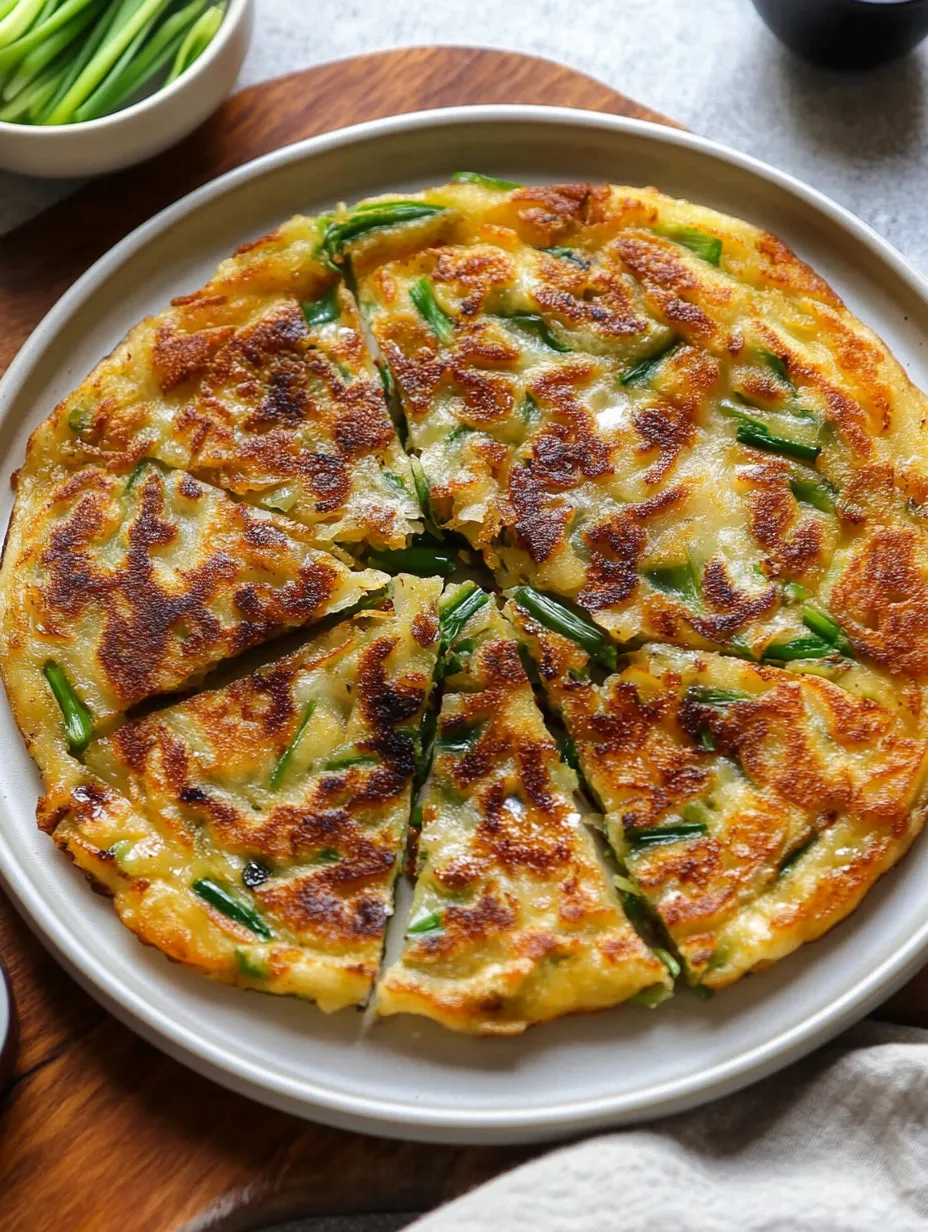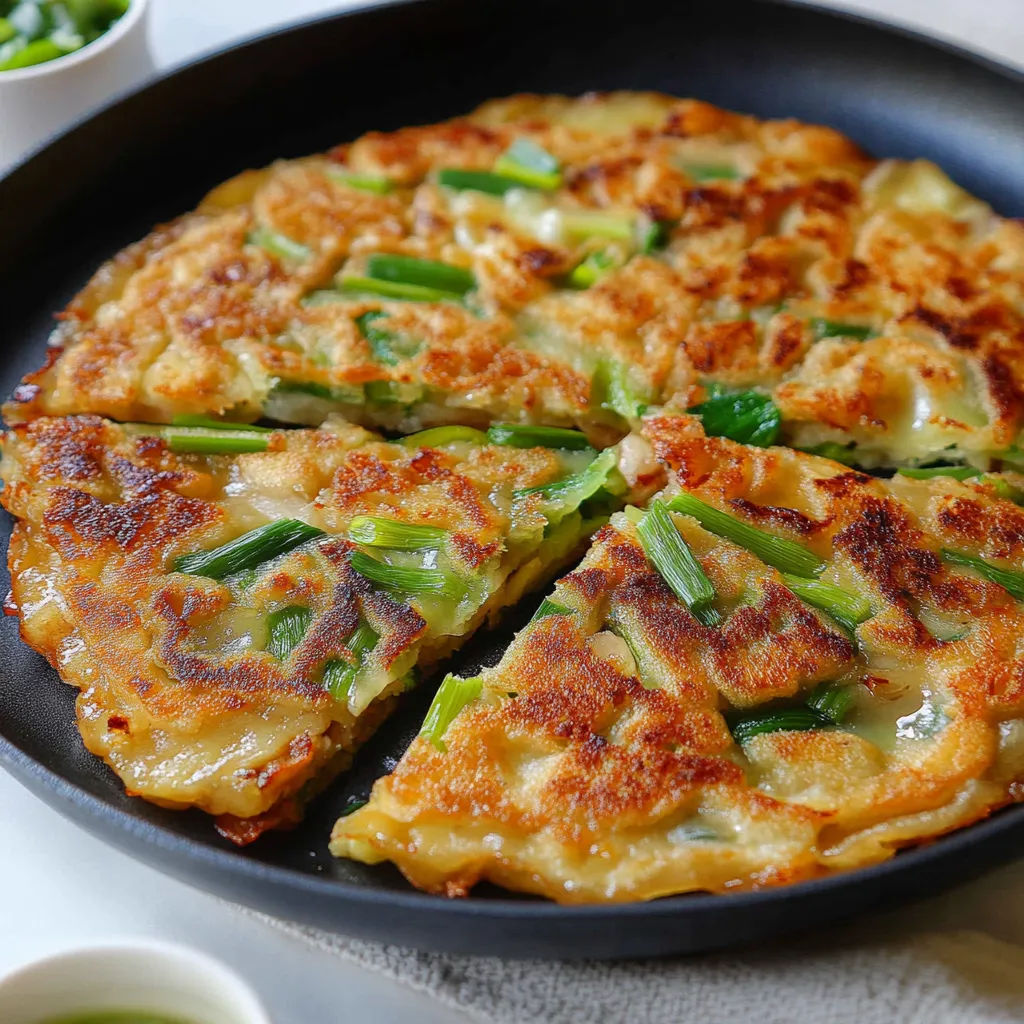 Pin it
Pin it
Transform simple green onions into a crispy, savory pancake that's a beloved Korean street food and restaurant favorite. This pajeon delivers the perfect combination of crispy exterior and chewy interior, with fresh scallions in every bite. After countless attempts at recreating restaurant-quality pajeon at home, I've discovered the secret to achieving that perfect texture.
Last week, I served these during a rainy evening with traditional makgeolli (Korean rice wine), and my guests couldn't believe they were homemade. Sometimes the simplest recipes create the most satisfying results.
Essential Ingredients
- Fresh Green Onions: Must be bright green and split lengthwise
- All-Purpose Flour: Creates the perfect base texture
- Potato Starch: Essential for crispiness (cornstarch works too)
- Baking Powder: The secret to extra crispiness
- Very Cold Water: Temperature is crucial for texture
- Chicken Bouillon Powder: Adds depth of flavor
- Neutral Oil: For achieving perfect golden crust
Detailed Cooking Instructions
- Scallion Preparation:
- Begin by washing green onions thoroughly and patting them completely dry - moisture is the enemy of crispiness. Split each scallion lengthwise and cut into 1.5-inch pieces. This uniform size ensures even cooking and makes the pancake easier to eat.
- Batter Creation:
- Mix dry ingredients first: flour, potato starch, baking powder, and seasonings. Add very cold water, stirring just until combined. Don't overmix - some lumps are okay. The cold water is crucial for achieving the right texture.
- Initial Frying:
- Heat oil in a non-stick pan over medium-high heat. Place green onions first, then pour batter over them. This technique ensures the scallions are evenly distributed and creates the signature look of pajeon.
- Perfect Flipping:
- Wait until the bottom is golden brown and small bubbles form throughout before flipping. This usually takes about 3 minutes. Add more oil around the edges after flipping for maximum crispiness.
 Pin it
Pin it
During my visits to Korea, I noticed pajeon was especially popular on rainy days, served with makgeolli. This combination has become my favorite way to make any gloomy day better.
 Pin it
Pin it
Temperature Control
Maintaining proper heat is crucial. Start with medium-high heat, then reduce to medium once the pancake is cooking. This ensures a crispy exterior without burning, while allowing the interior to cook properly.
Dipping Sauce Magic
The accompanying sauce is equally important as the pancake. Combine soy sauce, rice vinegar, and sesame oil for the perfect balance of salty, tangy, and nutty flavors. Garnish with additional chopped green onions for freshness.
Storage Strategy
While best served immediately, leftover pajeon will keep for up to 4 days in an airtight container in the refrigerator. Reheat in a pan with a bit of oil or air fry at 350°F for 5-6 minutes to restore crispiness.
 Pin it
Pin it
Final Thoughts
This Pajeon recipe represents the perfect marriage of simple ingredients and careful technique. Each crispy bite delivers the satisfaction of Korean street food in your own kitchen. Whether you're an experienced cook or just starting to explore Korean cuisine, this recipe proves that attention to detail and quality ingredients create something truly special.
Frequently Asked Questions
- → Why must the green onions be very dry?
- Wet onions will make the pancake soggy and prevent it from getting crispy.
- → Why use cold water in the batter?
- Cold water helps create a crispier texture in the final pancake.
- → Can I make this ahead of time?
- Best served fresh and hot, but can be reheated in a pan to restore crispiness.
- → Why add onions to pan first?
- This technique ensures the onions get properly charred and flavorful.
- → Can I add other ingredients?
- Yes, you can add seafood, kimchi, or other vegetables to the basic recipe.
